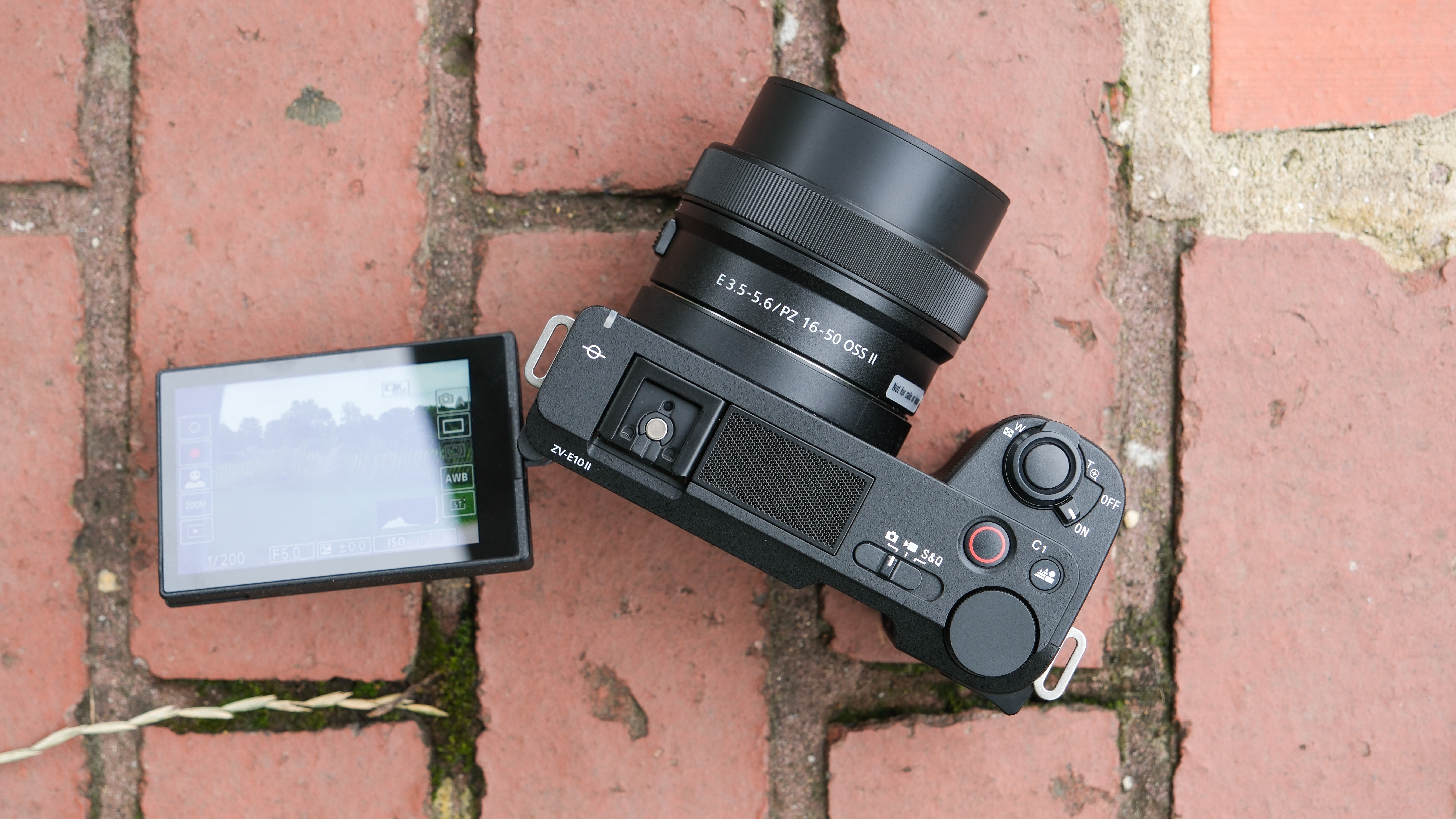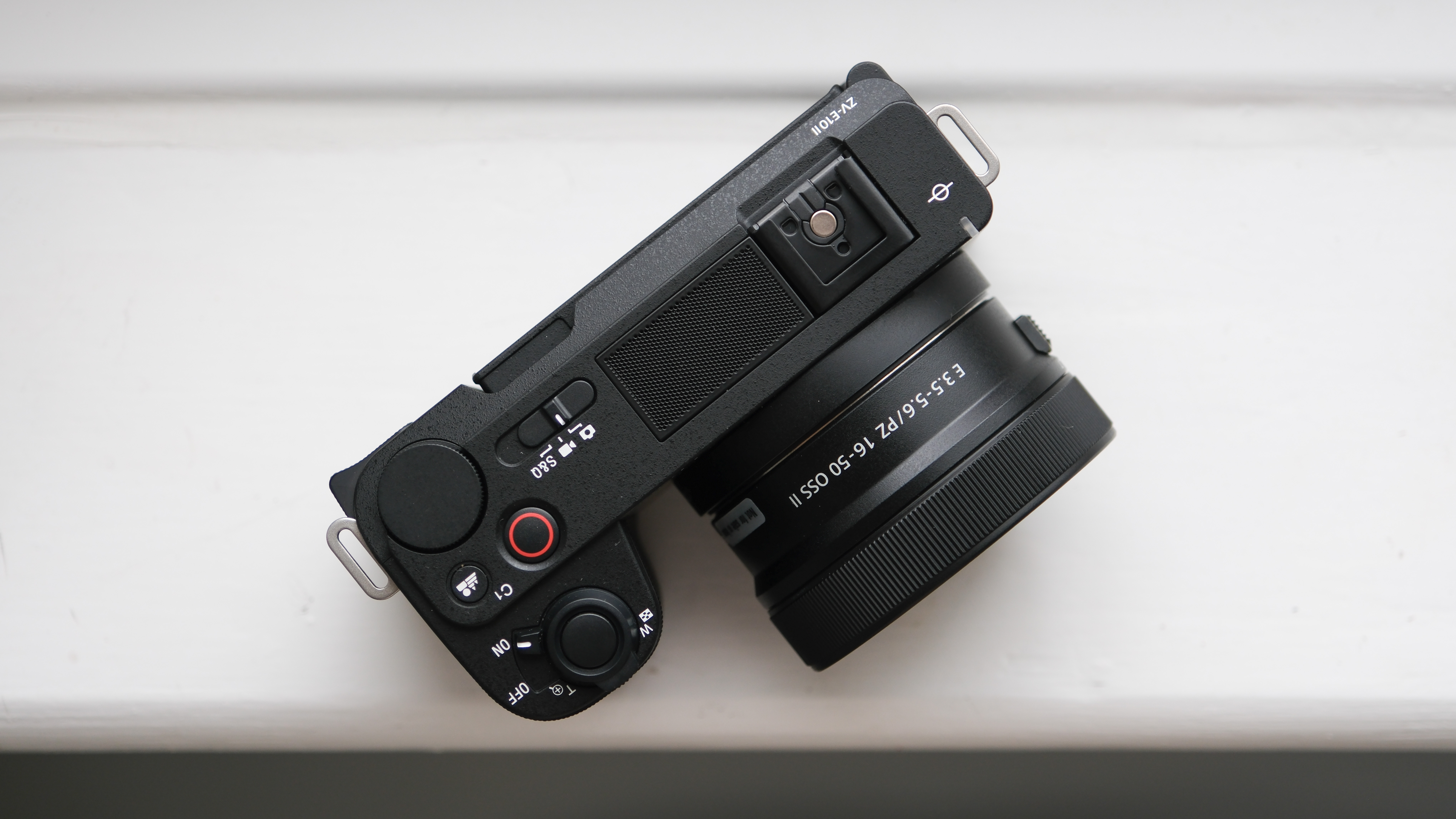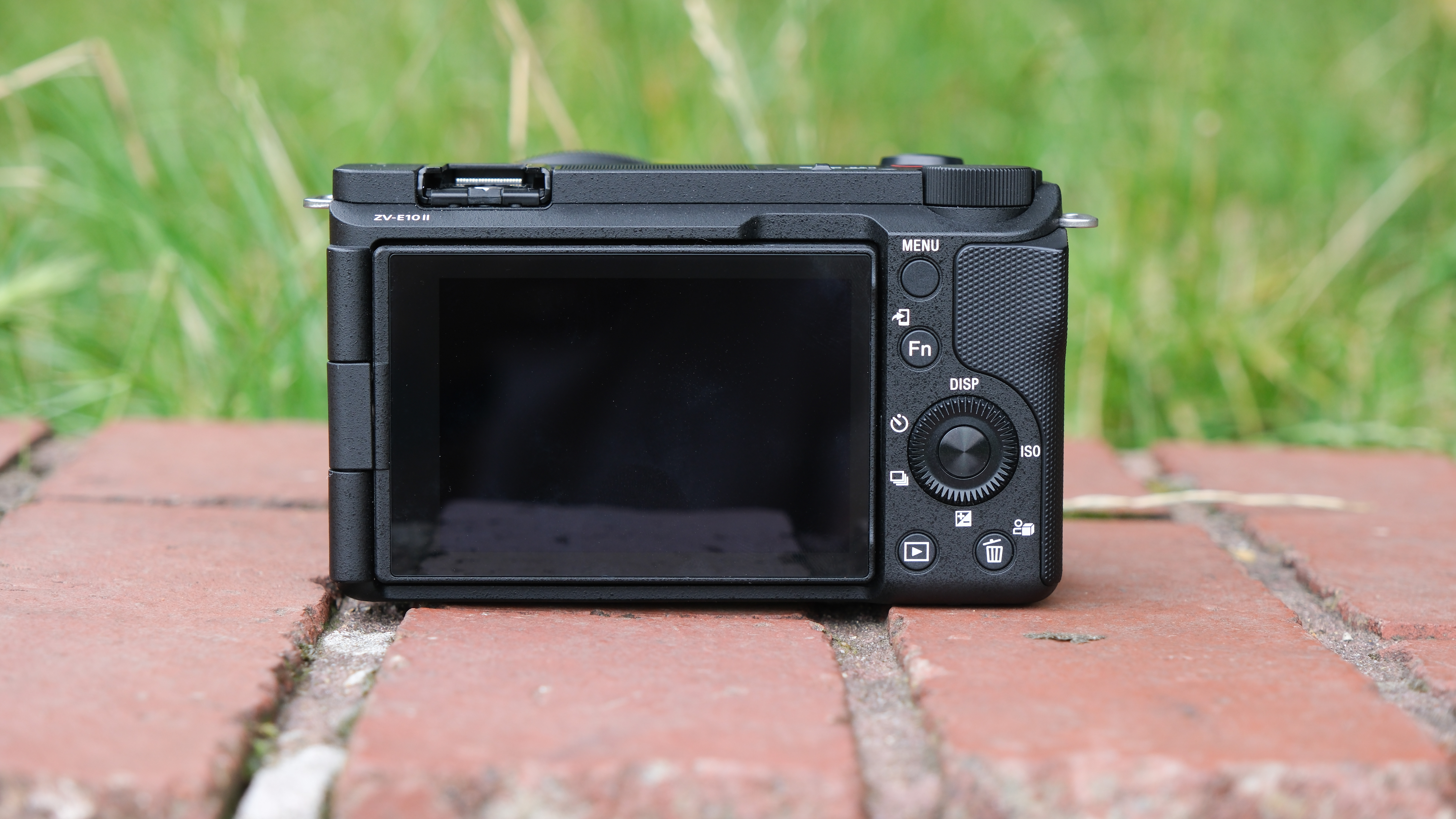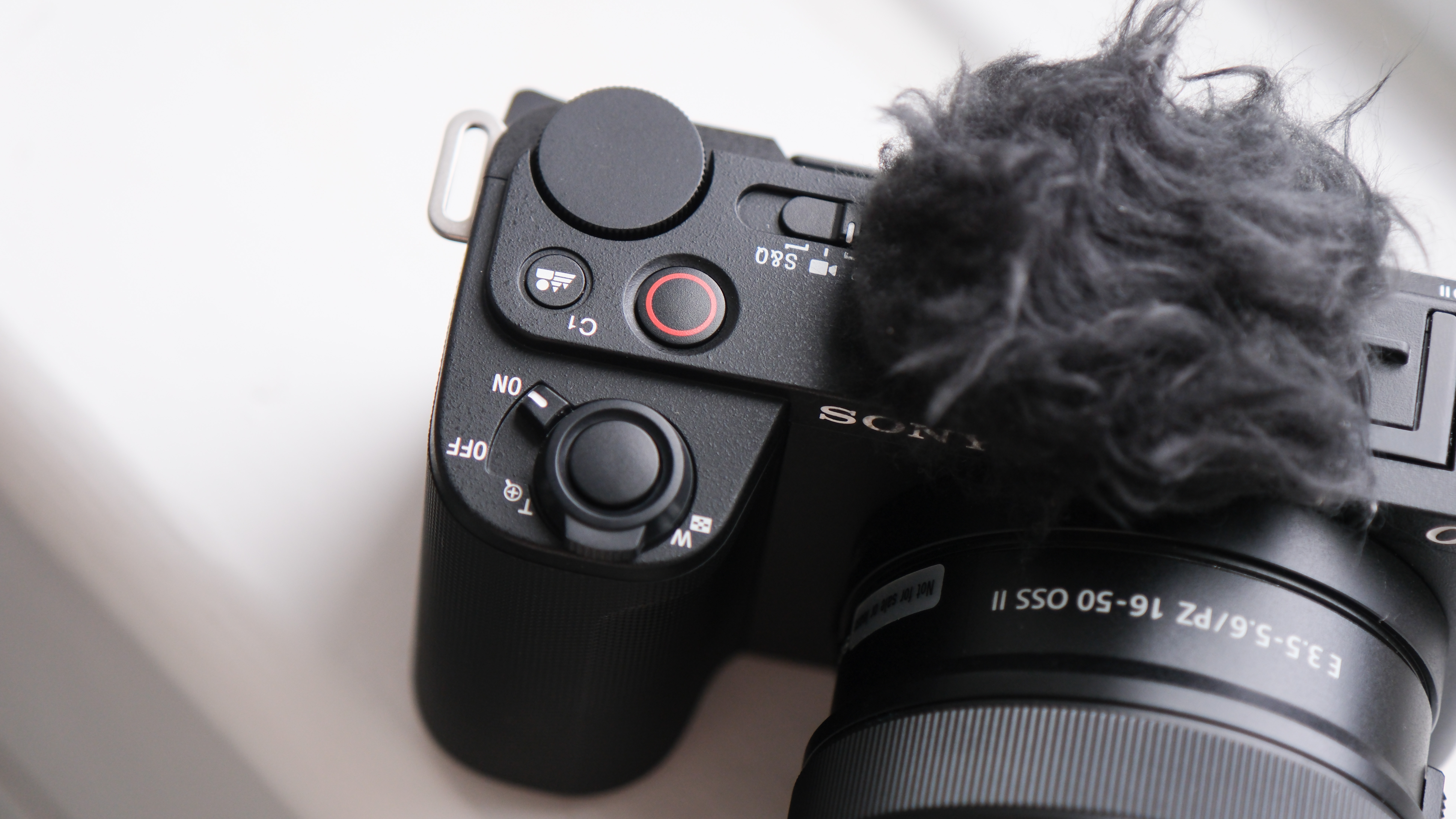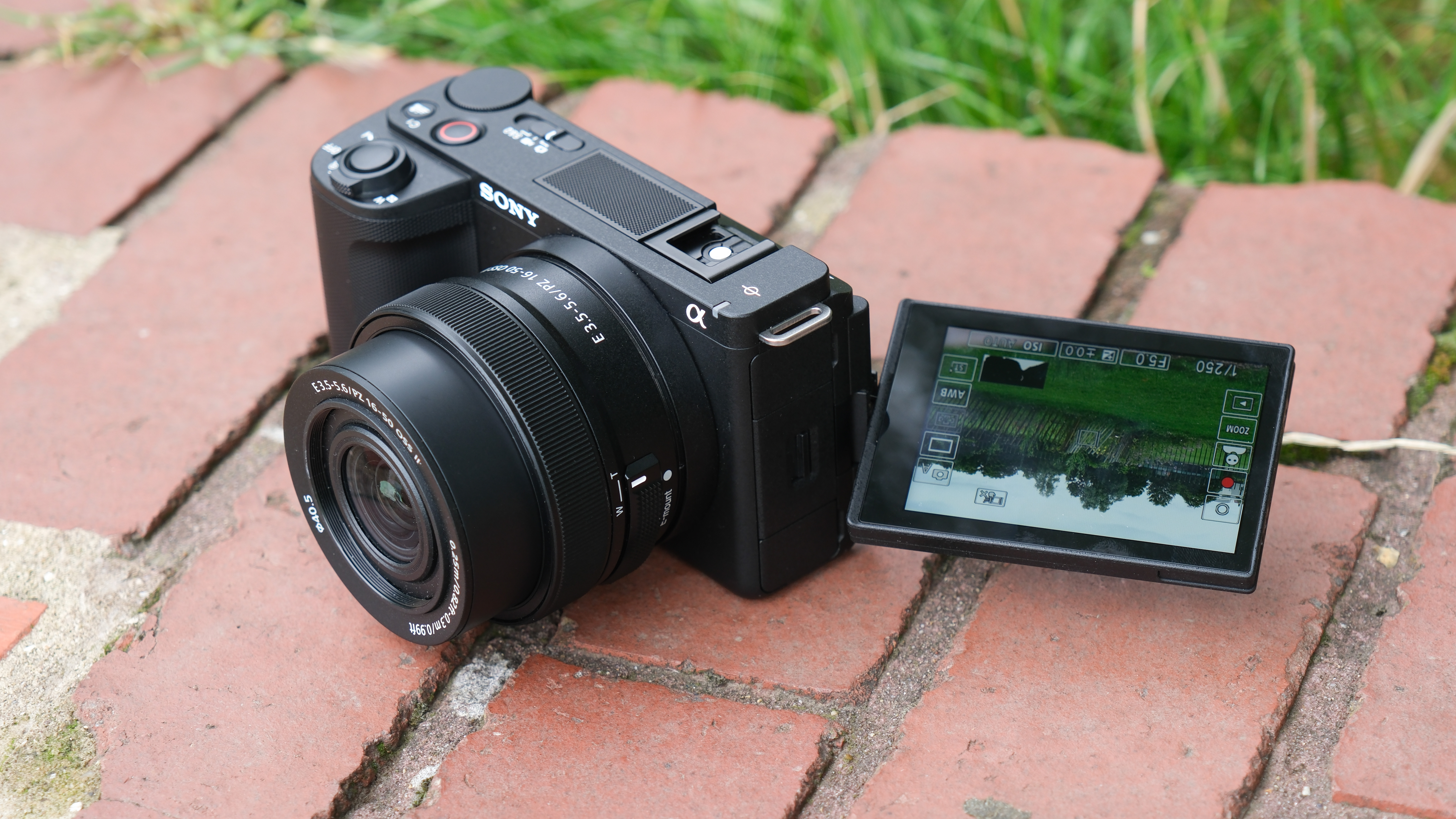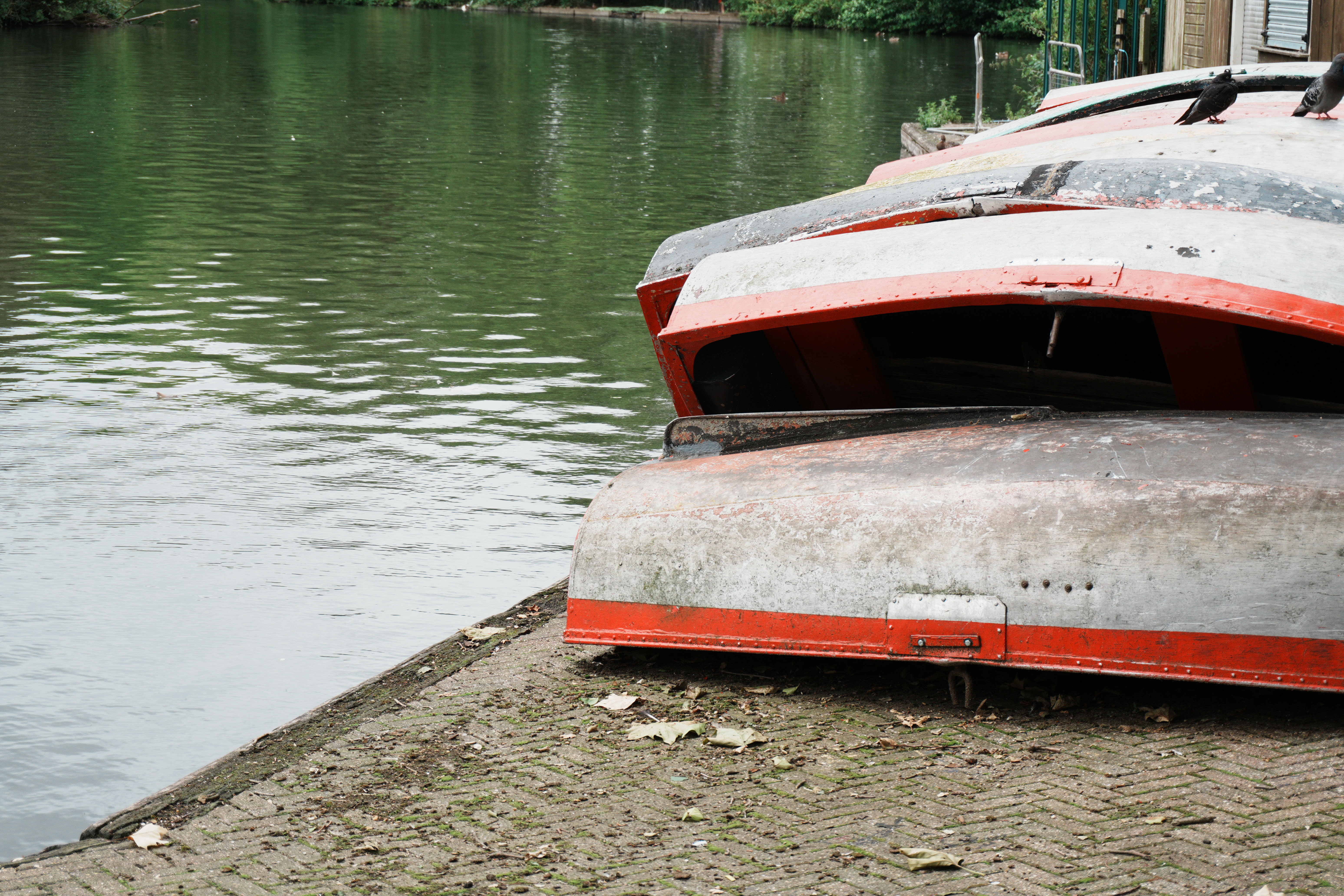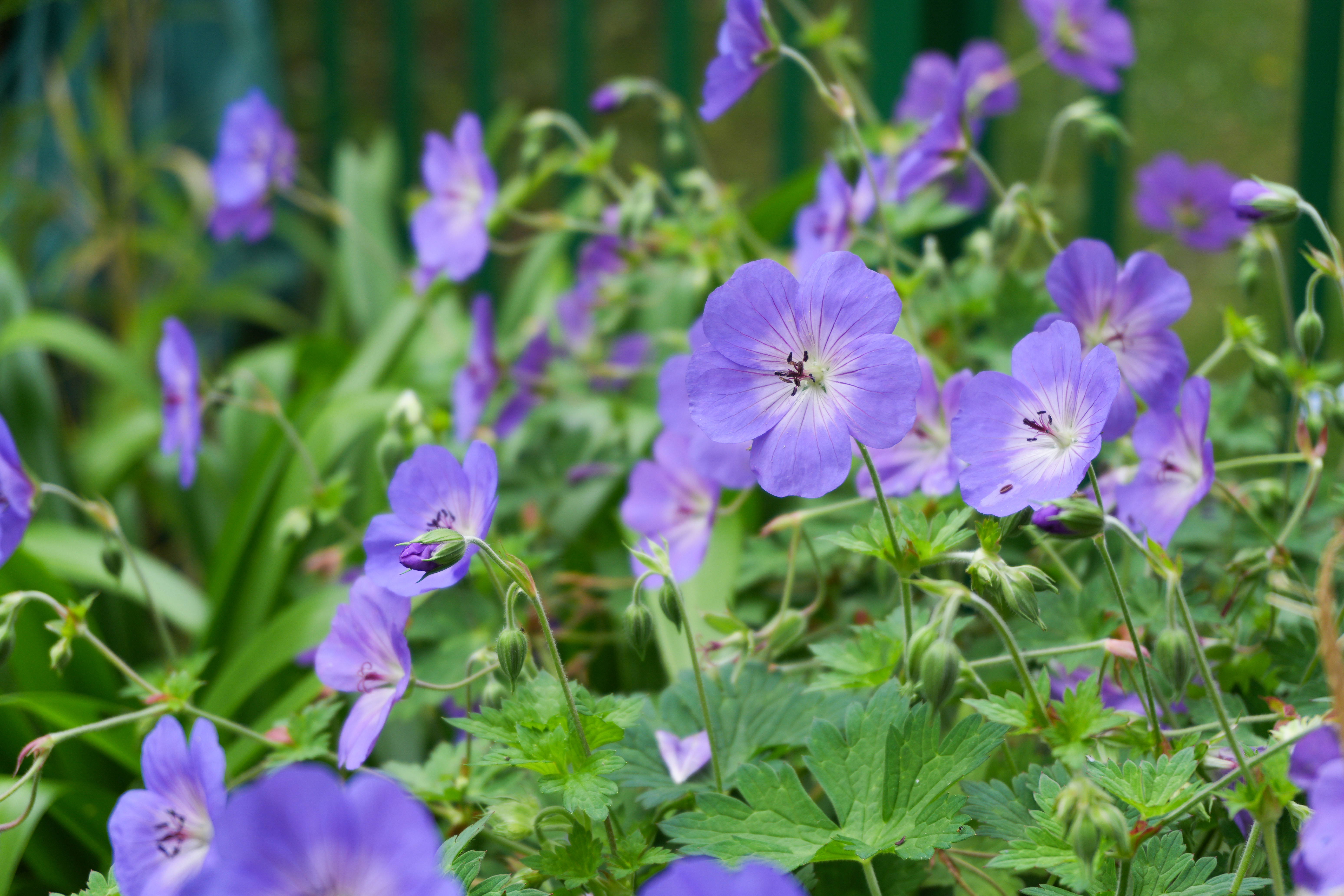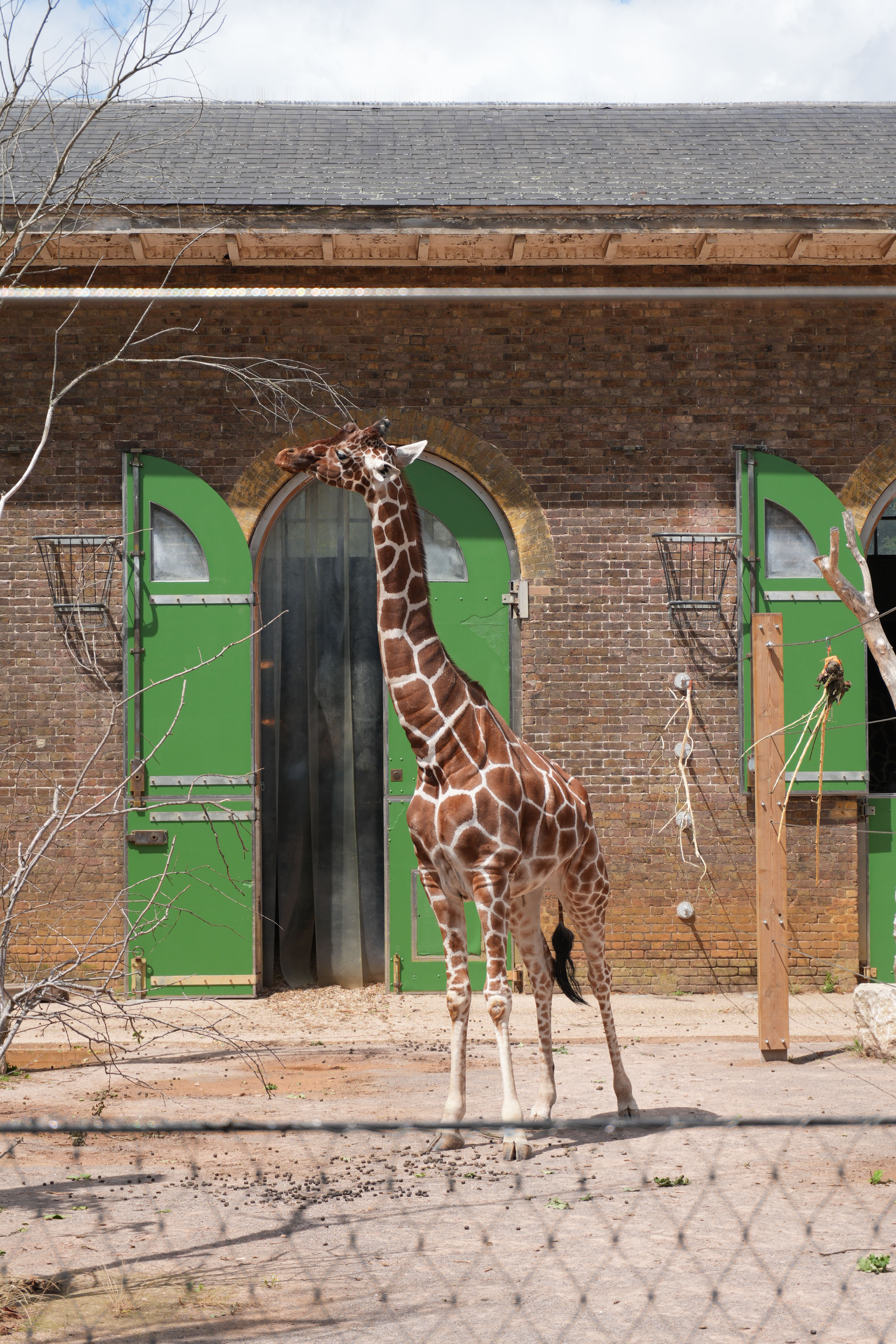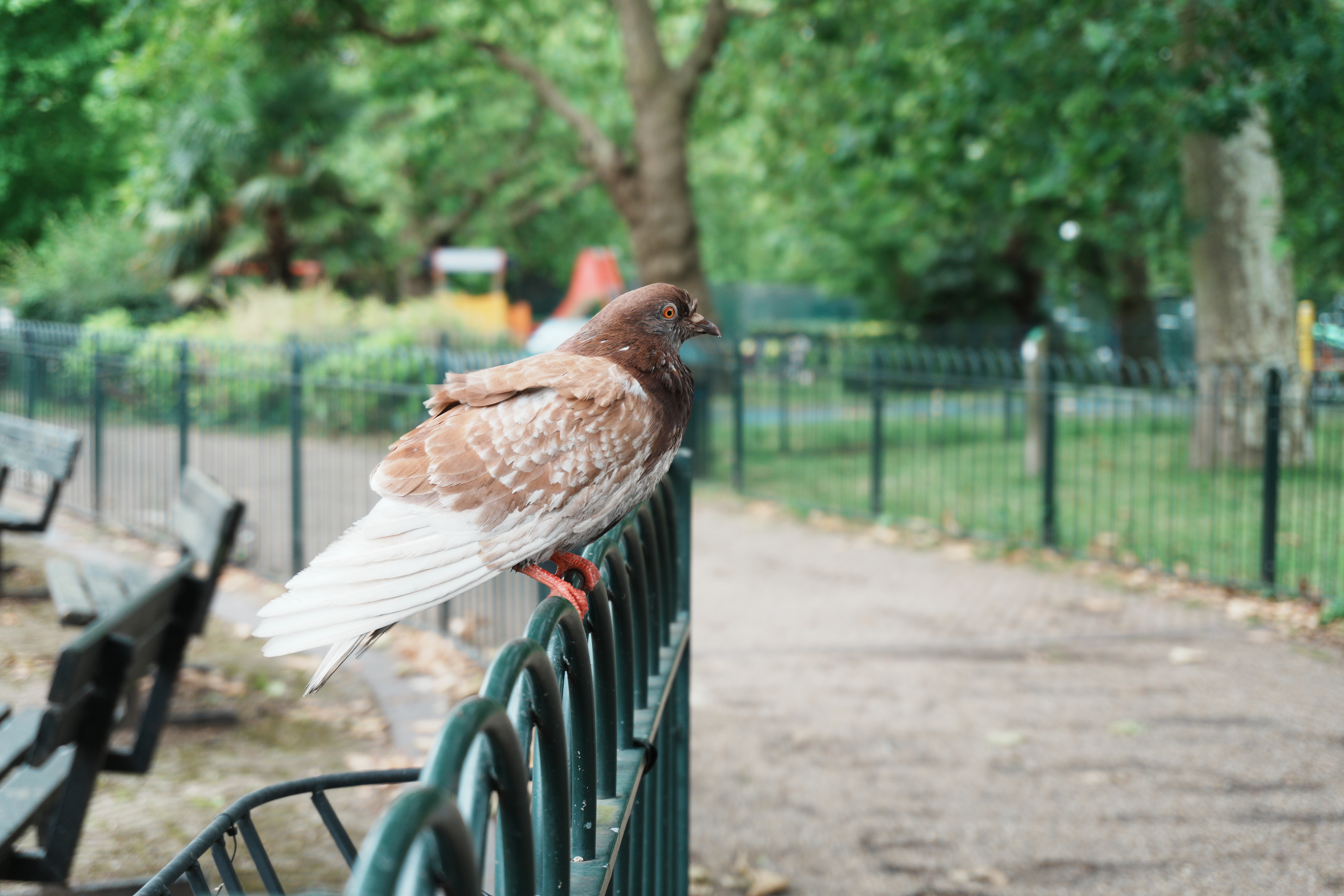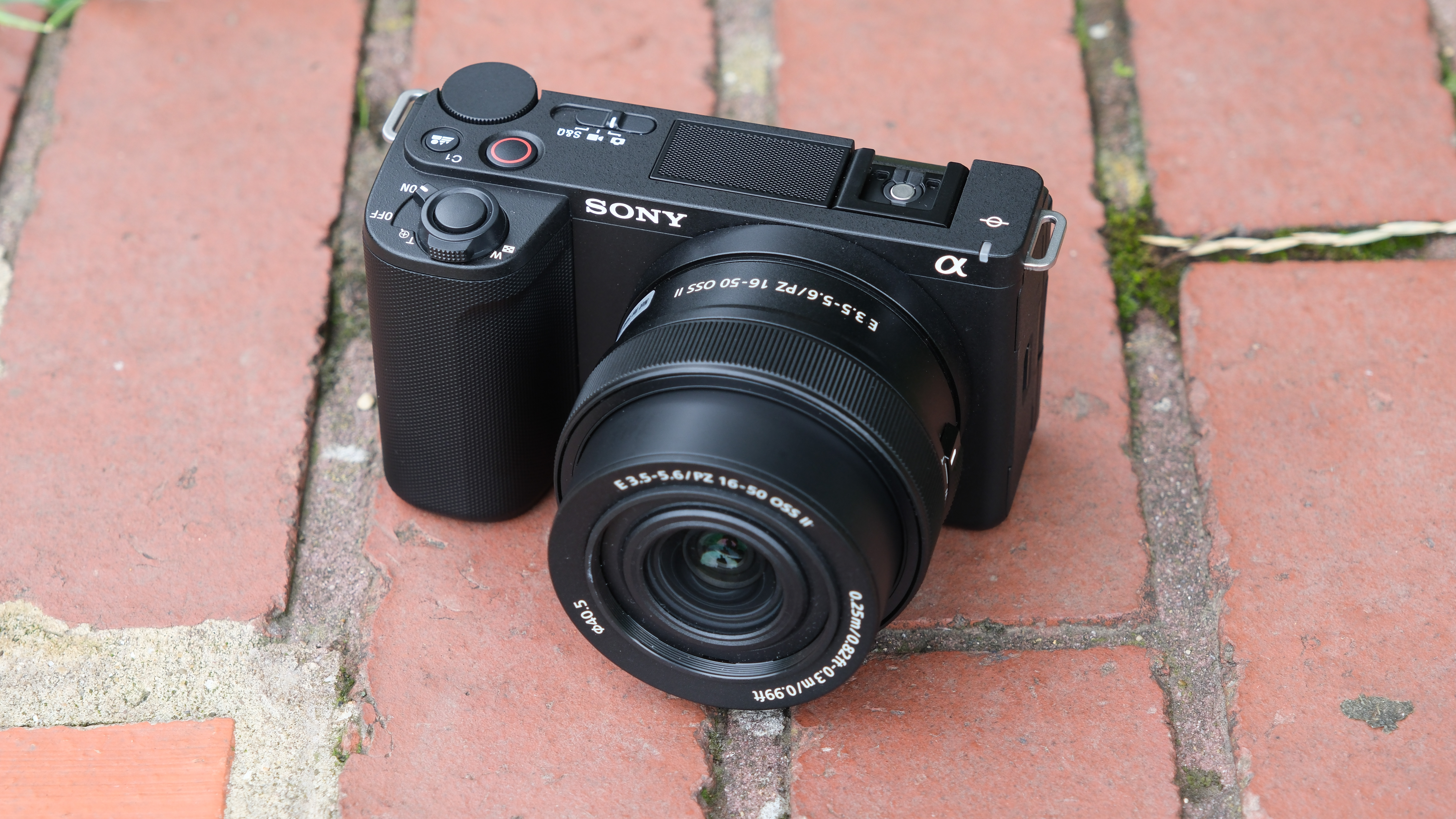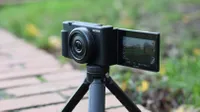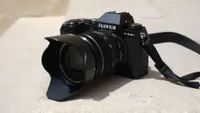Digital Camera World Verdict
I really liked Sony’s first ZV-E10 camera, but there were certainly a few areas where it fell just a little short with measly battery life and some restrictive crop factors. Thankfully, Sony has seen to correct pretty much every fault I had with the original model, and while the ZV-E10 II is still not the perfect all-rounder, it comes as close to vlogging camera perfection as I think you can get right now. The only downside is it is more expensive than the original, but still sub-$1000, it also offers good value.
Pros
- +
Great quality 4K with (mostly) no crop
- +
Generous grip for a small camera
- +
Hugely improved battery life
- +
Better quality streaming options
Cons
- -
No AI processor means limited subject recognition
- -
Misses out on cool auto-framing tricks
- -
Tiny body doesn’t pair well with bigger lenses
- -
No IBIS
Why you can trust Digital Camera World
Sony ushered in something new with its ZV series of cameras, call them what you will – vlogging cameras, travel cameras, YouTube cameras, but there is certainly a demand for smaller cameras with bigger capabilities, so much so that they apparently made up almost half of Sony’s camera sales last year.
The first generation of ZV cameras offered a lot of potential but managed to trip over a few hurdles on their way to greatness. The ZV-E10 especially uses a sensor that probably should have been marked for retirement, but instead left the camera struggling with hefty crop factors on 4K footage and poor streaming performance. However, if Sony had learned anything was a little unclear after the first ZV camera to get a follow-up, the ZV-1 II did little to move the needle, and in fact, I prefer the original.
Thankfully Sony has pushed a bit harder with the ZV-E10 II, with much more substantial and noticeable improvements, with a new 26MP sensor (well not new new, it's the same as in the Sony FX30 and Sony a6700), a much larger battery, and Sony’s modern and infinitely better menu system.
Sony ZV-E10 II: Specifications
| Sensor | 26MP Exmor R (APS-C) |
| Processor | Bionz X |
| ISO | 50 to 102,400 |
| Autofocus | 759-point phase-detect |
| EVF | None |
| Screen | 3.0-inch vari-angle touchscreen, 1.03m dot |
| Video | 4K/60p 4:2:2 10-bit internal, FHD120p |
| Max burst | 11fps (continuous autofocus), 30fps burst |
| Size | 114.8 x 67.5 x 54.2mm |
| Weight | 10.3oz / 292g |
Sony ZV-E10 II: Price
The ZV-E10 II costs $999 / £925 / AU$1,699 for the body only or $1,099 / £999 / AU$1,899 with the kit lens. I usually don’t get to say this, but despite a whopping price increase of $200 over the previous model, the ZV-E10 II actually represents good value.
Where the first model was compromised, the sequel manages to correct those mistakes with a new sensor and new battery which I think entirely justifies the price increase. The ZV-E10 II also managed to shave a healthy $400 off the price of the Sony a6700, and $800 off the price of a Sony FX30 which shares the same sensor, processor, and battery.
It is hard to find direct comparisons for the ZV range, as they are still fairly unique, but if 4K footage is the main priority, there are cheaper cameras such as the Nikon Z30 and Canon EOS R50, but these lack the same features and audio capabilities. I still think the Fujifilm X-S20 is the hybrid vlogging camera to beat, but that will set you back an additional $300 (without a lens).
Sony ZV-E10 II: Design & Handling
There isn’t much of a noticeable change in design from the first ZV-E10, but then I really didn’t have any complaints about that original model. The camera is still wonderfully compact and small weighing just 10.3oz/292g, with a squared-off shape that is minimalist and inoffensive in design. On the rear, there is still a 3-in 1.04m-dot screen that is articulating for movie-making but as this is a ZV camera there is no EVF.
The best camera deals, reviews, product advice, and unmissable photography news, direct to your inbox!
If you look very closely you might be able to tell the grip has gotten ever so slightly larger to accommodate the new Z battery, it's impressive that Sony has managed to squeeze this 50% larger capacity battery in the camera without having to compromise on the camera's compact size. The SD card reader is on the opposite side of the camera, and not in the battery compartment, which is how it should be done.
The grip is very comfortable to hold, although very large hands might struggle slightly. I have mostly been using the camera with the new kit lens, which is the perfect size for this camera, and the two together feel like this is a compact camera. However, despite this decent grip, there is an issue trying to use the ZV-E10 II with large lenses. In fact the camera is so compact that your lenses don’t even have to be that “large” before they start causing a problem handheld, with lenses quickly becoming front-heavy and requiring a two-handed shooting style.
But this camera is clearly not designed with big glass in mind, and the camera should pair well with entry-level Sony lenses, or Sigma’s Contemporary range – although Sony will deny you focus breathing compensation on third-party lenses.
The only other changes to the ZV-E10 II’s layout are the swap to a three-way switch for the photo/video/S&Q modes rather than a button, which makes it so much easier to know which mode you are in with a glance, and the on/off button has also moved to a switch under the shutter button, which is fairly standard, so no notes.
The camera is very light on buttons and dials compared to Sony’s more advanced cameras, but it still manages to hold onto the essentials, with common settings including ISO, exposure, and timer positioned around the scroll wheel. There are also buttons dedicated to some of Sony’s ZV tricks including background defocus and product showcase which put them front and center, and also helped me remember they were there rather than being lost in a menu and rarely used.
Talking of menus though, the ZV-E10 II has Sony’s latest revamped menu system, which will be a revelation for anyone coming from Sony’s older and positively dreadful menu system on prior cameras. Not only are the settings menus easier to navigate, but there are also now easy options on the main screen for quickly changing common settings, which is a much more smartphone-like experience for anyone who may be less familiar with digital cameras. The menus are also fully customizable and flip automatically into a vertical orientation. This is clearly an area where Sony heard user frustrations and has come though with solid fixes.
Sony ZV-E10 II: Performance
Sure the ZV-E10 II can take pictures, it can even take really good pictures, but it really isn’t a photographer’s camera. The body has minimal control over settings for images, the lack of an EVF means you only have the screen to compose on, and the camera has no mechanical shutter so fast-moving subjects can turn into a house of mirrors.
Lens choice can also make all the difference in how useful this is as a photography camera. The included kit lens is a video-oriented lens, as while it has no issue with 4K60p video, it is not the sharpest photography lens out there. Of course, this being a Sony E-mount camera there is no shortage of lenses to pair with this camera, although as discussed earlier, the compact size of the camera is a very limiting factor in lens choice.
However, all that said, the camera does share the same sensor and processor as the photography-oriented Sony a6700, so with the right lens and the right conditions, images themselves have the potential to be every bit as good as that camera. There are some 'Looks' on the camera for tweaking the style of your images, although Sony's are a little like an Instagram filter and are not nearly as advanced and useful as Fujifilm's film simulations or Panasonic's photo LUTs. You can see a couple below to get an idea.
How much benefit you will get from the ZV-E10 II’s photography mode really depends on how you intend to use the camera. If you are primarily a videographer who might want to snap some pictures on occasion, then the ZV-E10 II is perfect. However, if you are a hybrid shooter and pictures matter more to you than that, I would recommend looking harder at the Sony a6700 (or even Sony’s Alpha series) instead.
When it comes to video, the ZV-E10 II is essentially a Sony FX30. Okay, there are a few more differences, but the sensor and processor are the same between the models, so we know how good the ZV-E10 II footage should be, and the ZV-E10 II does not disappoint.
After the missteps with 4K on the previous model, there is very little to complain about, with 4K30p here with no crop, and 4K60p with a negligible 1.1x crop, the only omission is 4K120p which is possible on other cameras sharing this sensor but isn’t really make or break for this price.
With regular 4K, the ZV-E10 II does get hot, although it didn’t cut out for me with my short bursts of filming, longer periods of filming, or long streaming sessions might cause a few more issues. I left the camera filming in 4K60p, where it managed around 45 minutes before needing a cooldown. I suspect that it might not have been able to cope with 120p footage which is why it was left out.
The regular 4K footage directly out of the camera is great, with a good amount of detail and the dynamic range producing a good balance between the highs and lows. However this is the tip of the iceberg, and the ZV-E10 II is capable of so much more. Cinematic vlog mode can automatically use Sony’s S-Cinetone grading makes for great-looking footage with minimal effort, you can also import your own LUTs directly into the camera, or if you want to edit after the fact, then the ZV-E10 II can record in S-Log with 10-bit color. For a camera of this size and price, it is great to have this much flexibility when it comes to recording.
Above: footage shot in Sony's 'Cinematic Vlog' mode using S-Cinetone makes for some great-looking footage straight out of the camera.
Sony’s product showcase focus trick is also fantastic for product or beauty vloggers who might want to hold products up to the camera. The ZV-E10 II will automatically focus on whatever the nearest object to the camera is, and snap back to a face when the product is lowered. It works really well and the autofocus is seamless. The other gimmick for more ‘cinematic’ footage is to use the background defocus mode which uses the widest aperture possible to achieve the most blur, but it really will depend on your lens for how beneficial this is, with the standard kit lens, I didn’t notice a massive difference with its mediocre maximum aperture.
There is the now ZV-signature three-capsule stereo microphone built into the top of the ZV-E10 II. This microphone offers three-way directional audio (front, back, and surround), which can be manually selected or you can leave the camera to pick the best direction to record audio from. There is also a dead-cat-style microphone cover in the box, which did a good job of keeping the wind noise at bay.
The directional pickup works well, I found when setting the audio to the rear and walking around outdoors filming and chattering away behind the camera, it picked up my voice out of the surrounding din. However, I did find this led to an overall more compressed sound, and lost the richness of the environment, and if I was filming in a more serious capacity then I would have recorded dual audio channels and mixed them in post.
Overall the inbuilt mics in the ZV-E10 II are excellent, and leagues ahead of almost any other built-in microphone on any other camera, and in a bind, the built-in directions definitely can save the day without an external mic. However, they are not going to be a replacement for a good external microphone used correctly. When recording a quick piece to camera for the review, I much preferred the sound captured from my RØDE shotgun mic for its richness and depth.
Above: footage captured using the ZV-E10 II's automatic settings is nicely sharp and colorful and a huge step above video from a smartphone.
The ZV-E10 II features improved autofocus from the previous model, which is definitely faster and more accurate with far more focus points, and some of the best you can get at this price point. However, I did notice a few times that the autofocus would be slow to adjust itself in more complicated scenes. One example was when filming a flower bed, the camera had trouble determining the most prominent flower in the scene where it should have been quite obvious due to the scale and framing.
The ZV-E10 II also falls behind other Sony cameras in subject recognition and tracking due to the lack of AI chip. But first, the good news is I had no issue getting the camera to recognize my face and eyes, so for vlogging. However, the animal recognition was a step back from what I am used to from other cameras, with the ZV-E0 II having a lower-than-ideal hit rate on domestic animals, but failing miserably on more exotic animals at the zoo.
As mentioned a few times already, battery life has been significantly improved in the ZV-E10 II as it now uses the NP-FZ100 battery. Sony thinks you should be able to get a total of 195 minutes of continuous recording on one charge which seems reasonable based on my tests. Battery life will depend quite dramatically on how you use the camera. Still, in my experience, each day I mostly was filming short video clips totaling around one to two hours when combined and came back home with around 20-30% battery.
Sony ZV-E10 II: Lab Results
We are awaiting the release of an update to our testing software to recognize the RAW files from the ZV-E10 II. We will update this section in the coming weeks when the camera and update become publicly available.
Sony ZV-E10 II: Verdict
I was quite impressed with Sony’s first ZV-E10 camera, although it did fall short in a few areas, such as its limited battery life and restrictive crop factors. Fortunately, Sony has addressed nearly all of these issues in the ZV-E10 II.
This time around, the ZV-E10 II offers great quality 4K video with (mostly) no crop, which is a significant improvement. Handling is a dream with small lenses and the generous grip is a welcome feature for such a small camera. The hugely improved battery life also ensures you can shoot for longer without interruptions. Finally for streamers, the camera offers better resolution streaming options with more ways to connect.
However, there are still some limitations. The absence of an AI processor means subject recognition is limited, and it misses out on cool auto-framing tricks. The tiny body doesn’t pair well with bigger lenses, which can be a drawback for those with bigger optics. Additionally, the camera lacks in-body image stabilization (IBIS), which would have been a valuable feature for smooth shooting without relying on active stabilization and more crops.
While it isn't the perfect all-rounder, it comes remarkably close to achieving vlogging camera perfection. It is priced higher compared to the original, however, remaining under $1000, it still provides good value for the features, and there is nothing else quite like it on the market. Despite any drawbacks, the ZV-E10 II comes as one highly compelling option for vloggers and content creators.
| Features | New sensor, bigger battery and a much improved menu system make this a worthy upgrade over the original. | ★★★★★ |
| Design | Nice design, with a chunky grip, but still impressively compact, especially paired with the kit lens, although larger lenses become front heavy. | ★★★★☆ |
| Performance | Great quality 4K video now (mostly) with no crop, but the subject recognition takes a hit with no AI processor. | ★★★★☆ |
| Value | Very well priced for whats on offer, although there are cheaper 4K cameras if you won’t make the best use of all features. | ★★★★★ |
✅ Buy it...
- If you want a simple-to-use camera for video for YouTube or social media then you can get instantly sharable footage with minimal effort
- If you are looking to take a step up from your smartphone camera then the ZV-E10 II will produce much more ‘cinematic’ footage
🚫 Don't buy it...
- Digital cameras produce a different style from the minimal ‘iPhone look’ that is popular on much of social media
- Transferring files from the camera to a phone isn’t too much effort, but it is still a faff if you want to share photos and videos instantly
Alternatives
Sony ZV-1F
If you like the idea of a dedicated 4K camera with great audio but want something smaller, cheaper, and simpler then the Sony ZV-1F is the best option in Sony’s range. Offering phone-beating video and sound in a tiny compact size that can easily slip into a pocket or be passed around at an event.
Fujifilm X-S20
Suppose you are interested in photos as much as video then the Fujifilm X-S20 is my favorite hybrid camera right now. With a lot of features ready for great video, the camera also has an EVF for composing images, and with Fujifilm’s uber-popular film simulations and recipes you can get instantly sharable shots.

Gareth is a photographer based in London, working as a freelance photographer and videographer for the past several years, having the privilege to shoot for some household names. With work focusing on fashion, portrait and lifestyle content creation, he has developed a range of skills covering everything from editorial shoots to social media videos. Outside of work, he has a personal passion for travel and nature photography, with a devotion to sustainability and environmental causes.
